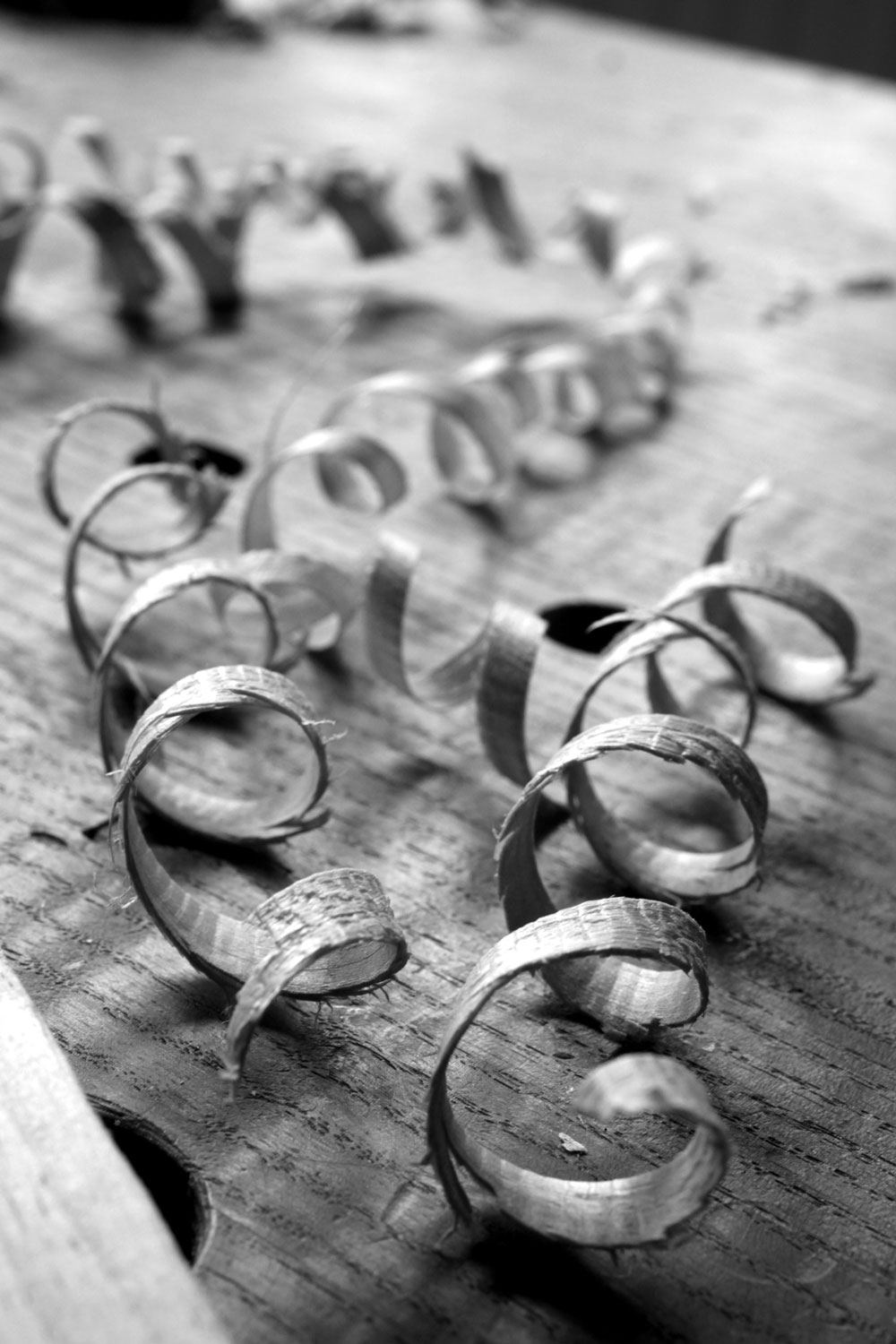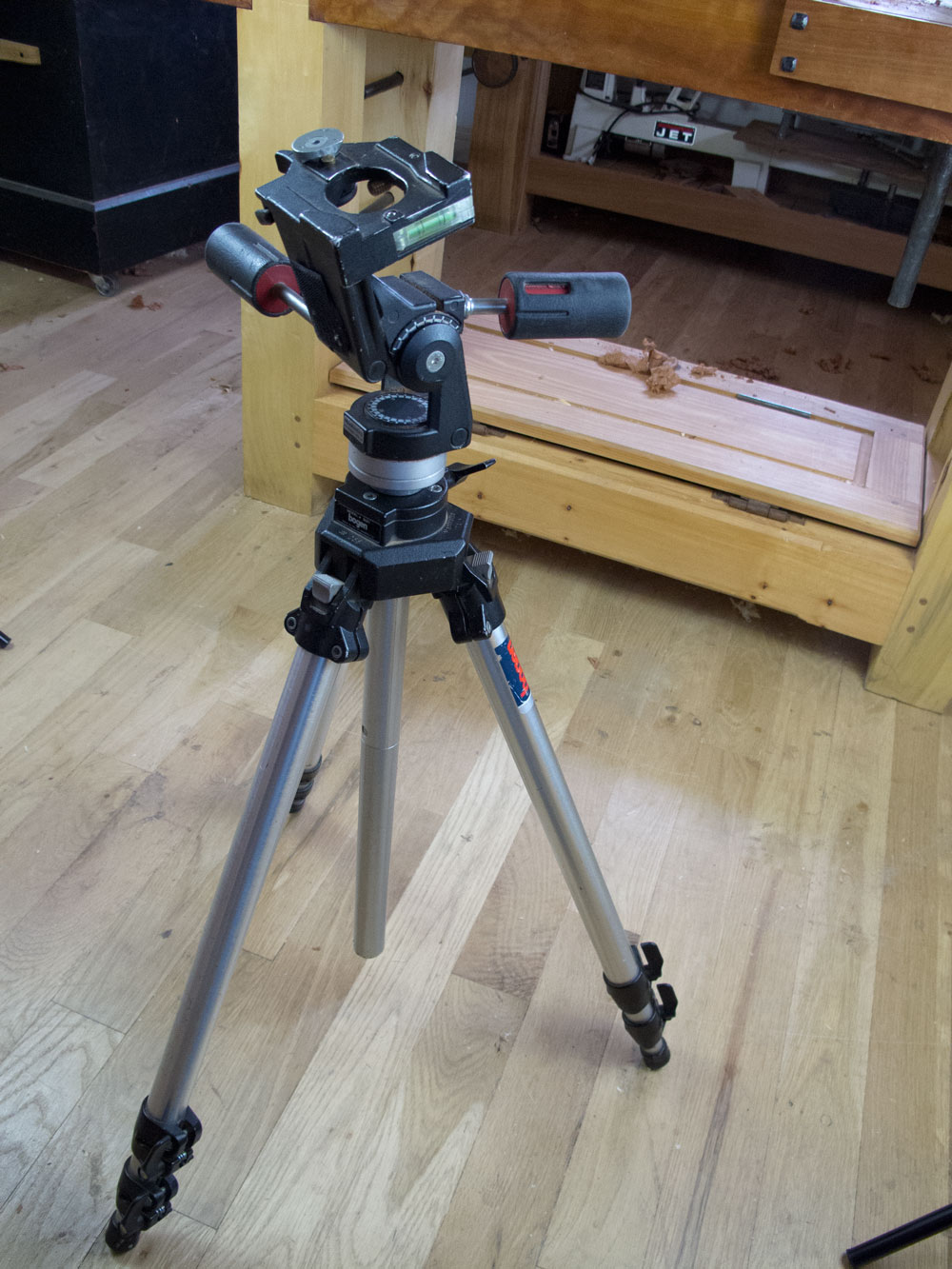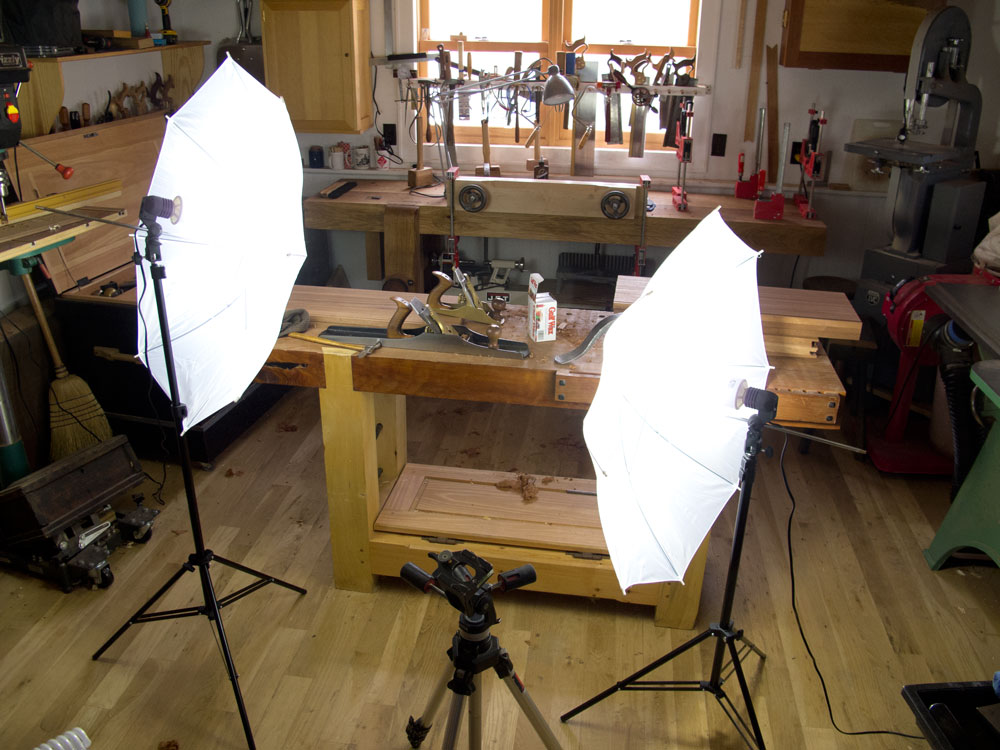I get asked about the equipment I use to take the photographs for this blog, my magazine articles and the books at Lost Art Press.
I think that equipment has little to do with photography. But don’t tell that to the people on photography message boards. If you think the woodworking forums are kooky at times, they are Romper-Room in comparison to the ones on photo equipment.
Until December, my photo equipment was one small notch above the Harbor Freight level. And while I’d rather talk about composition, lighting, depth of field and exposure, I’d like to get the equipment discussion out of the way. I’ll discuss the more important stuff at a later date.
When we bring a new author on board at Lost Art Press, here is what we tell them about equipment.
Tripod
The one place I’ll never skimp is on the tripod. It is the workbench of the photography world. I have a 20-year-old Bogen/Manfrotto tripod that I’ve rebuilt twice. You can find these pods on Craigslist. Even if they are beat to heck, they can be easily brought back. They were designed to last forever.
Many exposures in the workshop and with furniture can be quite long, so a good tripod is non-negotiable.
An SLR
Any entry-level digital SLR will do the job. I find camera bodies to be disposable. The lenses are where I’ll spend money because those will be with you forever. Until I recently bought a “prosumer” camera, I used Canon Rebel bodies. I don’t give a crap about megapixels. I just buy the camera with the largest sensor that is on sale.
You want a camera that can easily drop into full-manual mode. If you can’t manually adjust the f-stop, shutter speed and focus, the camera will frustrate you in the shop. The exposure meters in cameras are not your friend. The auto-focus is not your friend.
Full manual. Full manual. Full manual.
One last detail, the camera should be able to shoot RAW files (most cameras do). It is much easier to control everything (color, exposure, sharpness etc.) in the frame with a RAW file.
Lighting
A good set of lights can cost as much as a car. Luckily, you those are not the lights you are looking for. I recommend a low-cost continuous lighting system that uses CF bulbs, such as this Cowboy Studio system. Yup, the whole three-light rig is $60 and it is all you need to photograph your furniture and work at the bench.
Yeah, it’s not an Italian light setup. It’s a lot of plastic, and you need to be careful not to break the bulbs. But for the amateur (or someone writing their first book) I think it’s perfect.
The two umbrellas diffuse the light and make things nice and flat. Then you can use the third light to create shadows or highlight some part of the frame.
A Cable Release
One last thing, get a cable release for your camera. This will minimize camera shakes during long exposures. If you are too cheap to buy a cheap cable release, use the self-timer on your camera.
— Christopher Schwarz




I shoot medium/large format and have 3 of those Bogen heads. They are wonderful.
Also, you’re not kidding about photo forums.
Chris,
Can you share what your prosumer camera is and perhaps give us some idea of a few other cameras that might be adequate? I love woodworking but know very little about photography. I’ve been wanting to do studio quality photos.
I have a Canon 5D, but it is complete and stupid overkill. I should not have bought it.
I think you can do amazing work with something like a Canon Rebel T5 – spend less than $600 on the camera body. If you want to spend money, put it into the glass.
Second mention of glass, but no recommendations? In the canon system you can’t beat that cheapo 50/1.8 for insane value (well you can of course, but that’s best reserved for a camera forum)
In the early days of photography people used wooden tripods. Those were fascinating pieces of ‘high-tech’ equipment made of our favorite material – wood.
Perhaps we could build our own ‘workbench of the photography world’.
Roubo would predate photography, but is there any other source of information on how to build one. Could we use pine?
🙂
Ries Tripods, yup, still made of wood.
It seems like you also do a little. Photoshop work to your photos. Or do you use something else?
I assumed that was the control he was talking about in mentioning the RAW format. RAW definitely gives you plenty of control in the editing process. JPEG is often too punched up as far as contrast and saturation, not to mention just generally having less digital information that can be manipulated in each file. My prosumer Nikon D80 will save each shot as both if the shooter likes. Occasionally its nice to have both as the JPEG will show a potential in a shot I might have missed if I had just seen it in its less “punched-up” RAW state.
I’m going to talk about processing in a future post. I do very little in Photoshop. I check the color temperature, make sure the exposure is correct and add some vignetting if I want to be fancy.
You don’t need Photoshop to do those things.
I used to teach – the first 2 lines of my course decription were:
“If you wish to talk about equipment this is not for you.
This course is about photographs.”
Seemed to confuse many.
I loved my old Nikon FM2. Fully manual heaven. Have yet to upgrade to a digital because all my lenses become useless.
You might be surprised at what they will fit. check here.
http://www.kenrockwell.com/nikon/compatibility.htm
Thanks!
This might be the equivalent of an 18th century aboriginal suggesting the compilation of phone numbers into a listing that could be shared with everyone, but here goes.
Are there bluetooth enabled prosumer quality cameras controlled by an app out there? I know the high end can go past the moon, hence the ‘prosumer’ limiter.
I still use a cell phone cam for a lot of my blog pics; gives you an idea where I’m at on the photography tech scale. 🙂
Check out the Olympus stuff. It can be controlled by your phone.
Seconded. In fact, at this point, for most people I don’t recommend DSLRs anymore.
Many good mirrorless options, Olympus being the one I favor right now.
beyond control you can also pull pics off the camera without the need for a computer. great feature for bloggers.
I loved Manfrotto in those Hobbit movies. Gandalf has chops, but this time I cast my Academy vote for Manfrotto. And so should all who live to see such films.
The price of 20 year old tripods on Craigslist and ebay just jumped 50%.
I’m an Oly shooter (on Manfrotto tripods) too. Light, compact, easy to operate, great photos. As Chris says, doesn’t matter, pick what gear you think you like, learn it, use it. Yea, those photo forums…foamers…
Chris,
In case you haven’t tried this setup, instead of using both umbrellas to create flat light, try placing one above and behind the camera for your fill light. Then position the other closer and at a 45 degree angle to your subject for a key light. Then use the third light for a backlight/kicker. This setup is almost like shooting next to a north-facing window. Good modeling with nice shadows for detail.
Cliff
I shoot everything for our website with a vintage Quaker Oats Pinhole camera & a Roubo tripod.
It better be a vintage oats tube. You know, before the Quaker dude had to shave….
Photography is similar to woodworking in that you can’t buy talent. Someone skilled in the art with $500 in equipment will crush a novice with $20k in equipment.
Don’t forget about using the delay timer. I don’t have a cable and this eliminates any vibration. Thanks for these tips. I would like more.
Chris, thanks for the Cowboy Studios recommendation and link. I got one a few days ago and it looks/works great. One bulb didn’t work, and Cowboy Studios gladly sent out a free replacement. Thanks also for your work.